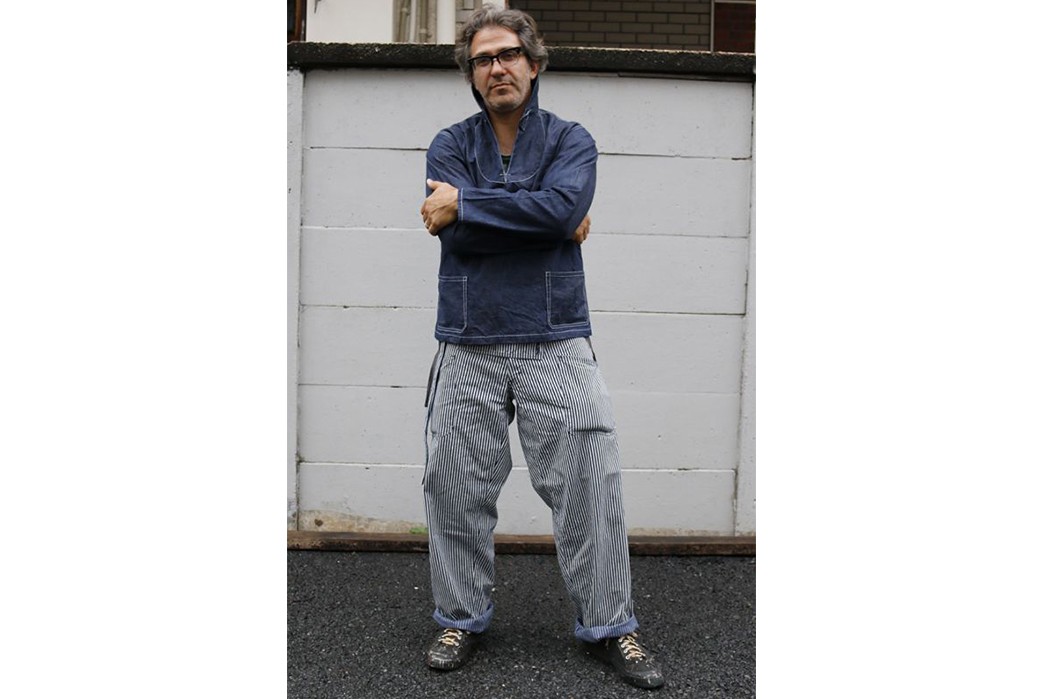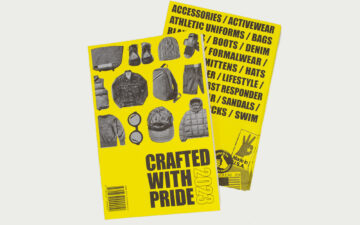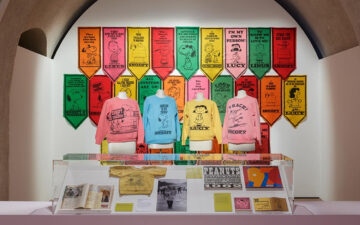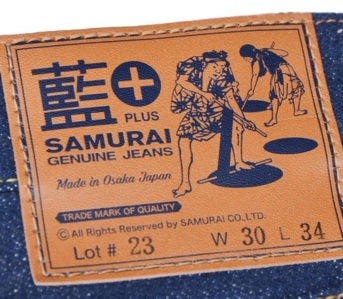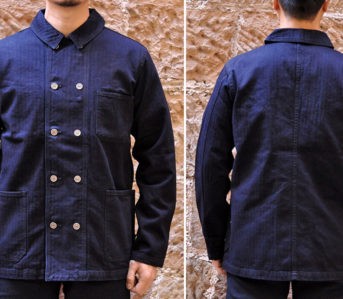I first came across John Gluckow’s name in an old issue of Inventory Magazine (RIP) a few years ago. I was immediately struck by not only John’s experience in the menswear and vintage world, but also his dedication to the craft (which arguably goes back to his days as a kid in New Jersey making his own swim shorts).
Upon reading the interview and later meeting John in NYC during Denim Days festival, I felt transported back to New York in the 90s and the buzz around the industry at that time—the early years of RRL, flea markets a plenty, the influx of Japanese buyers as ‘Ametora’ took hold and when you could buy a deadstock 1920s Pendleton jacket for five bucks at the thrift (more on that below).
During John’s impressive career, he did a stint at Ralph Lauren, had his own vintage store on the Lower East Side of Manhattan and created his own brand via Jelado of Japan. On one hand, it’s easy to see how this has happened to John —a gentle demeanor, charming wit, and exhaustive knowledge of clothing combined with a die hard work ethic isn’t something you come across every day.
Heddels (H): First things first, tell us about yourself—who is John Gluckow?
John Gluckow (JG): I was born in New Jersey in 1968 and grew up in a small beach town filled with Victorian architecture. I’ve been a very active athlete for most of my life and have a BA in philosophy and an Associates degree in Menswear Design. My mom grew up in a small Pennsylvania town where she absorbed the PA obsession with antiques (I suspect PA has more antique dealers than any other state in America). My dad was an electrical engineer for Bell Laboratories. He converted from Judaism to Christianity and became an Episcopal priest.
I think those details I’ve noted, especially my mom’s love of antiques and old stuff, along with my dad’s combination of critical thinking and passion for the mystical, have played a big part in where I’ve ended up in my life. I’ve been buying and selling vintage clothing for a living since 1994. And in 2013, I started a clothing brand with Yohei Goto, the owner and designer of the Japanese brand Jelado.
H: Your career to date has straddled menswear design and the vintage clothing business. How have these areas lent themselves to one another?
JG: Well, as I moved from one side of the that tandem to the other and back again, the two disciplines have helped me build my knowledge, confidence, and sense of style. Having a background and interest in design made it much easier for me, as a vintage dealer, to access and serve the design industry. I understood the challenges and approaches to design of many of my clients and was able to help them find pieces that fit their needs
When I started buying vintage clothing, my knowledge of design, history, and construction helped me learn quickly and more deeply about the age and uniqueness of the clothes I was finding. And when I am working as a designer, I have access to my own collection and the resources of my network of suppliers, which is a huge asset.
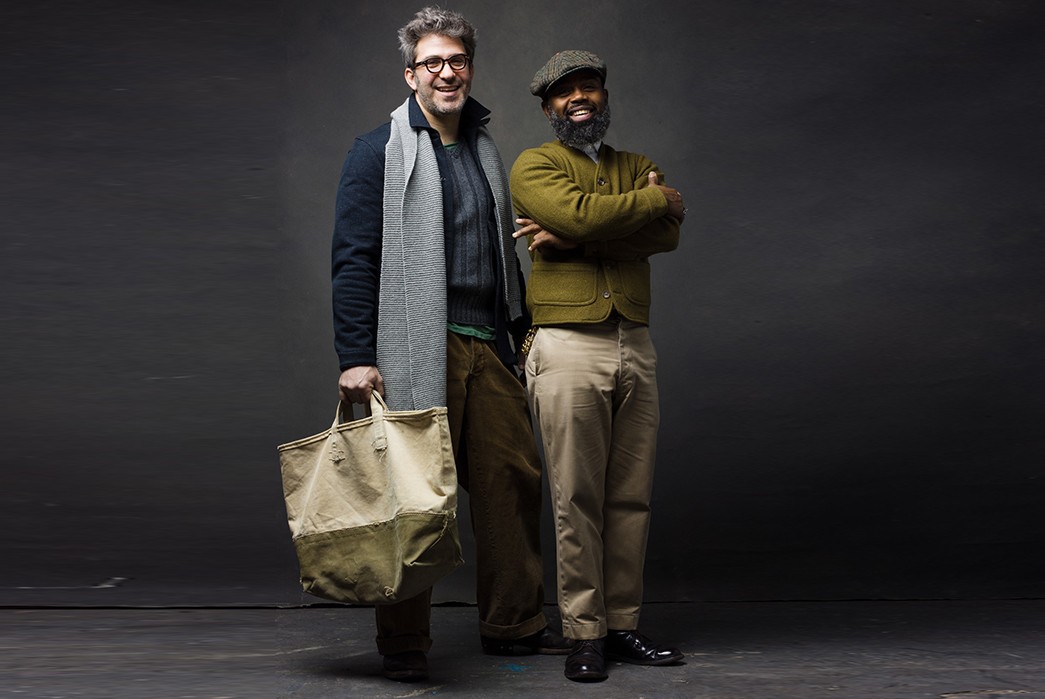
John with Ouigi Theodore of the Brooklyn Circus (Image via John Midgley)
H: In a previous interview you recounted making your own swimming trunks at 10 years old, instead of buying an expensive brand new pair. Did this experience sew the seeds for your future career in menswear?
JG: Sure…my mother was a crafter and home sewer. So, she actually suggested we make the shorts at home, because the commercial ones were so simple and easy to imitate. She took me to a fabric shop and helped me buy fabrics. She and my godfather helped me make the pattern. And they showed me how to sew the first pair. I think making my own clothes at that age and seeing the reaction of people, especially my friends, to the fabrics I chose, really sparked my interest in clothing and design.
H: You grew up in New Jersey and in close proximity to New York City, did these areas influence you in terms of your interest in clothing and design?
JG: Honestly, even though we were only an hour from Manhattan, we rarely visited the city. The major influence on my interest in fashion was my godfather. He would take me shopping for “back-to-school”. He was a school teacher, an opera singer and a real clothes horse. He made a lot of his own costumes for the opera, so he understood patterning and construction and taught me how to identify well-made clothes. By the time I was in high school, he and I would go to the mall or off-price shops searching for bargains on the more interesting designers we could find in our area stores.
H: You started your career in menswear at the Ralph Lauren store on Madison Avenue in 1992. Was working retail an important learning experience, before you moved into design work for Polo Sport?
JG: I worked in “The Mansion” [the now closed Ralph Lauren store on Manhattan’s Upper East Side] for a year in sales and then in the newly opened Polo Sport shop, as a display associate for a year before going to FIT [Fashion Institute of Technology] to study menswear. Working in those two shops was a great experience. Studying the style of my co-workers was like a master class in dandy fashion. The Polo Sport store included the first RRL shop and the design team was in and out of there a few times a week. It was like a laboratory. That was a really great time to work for Ralph Lauren.
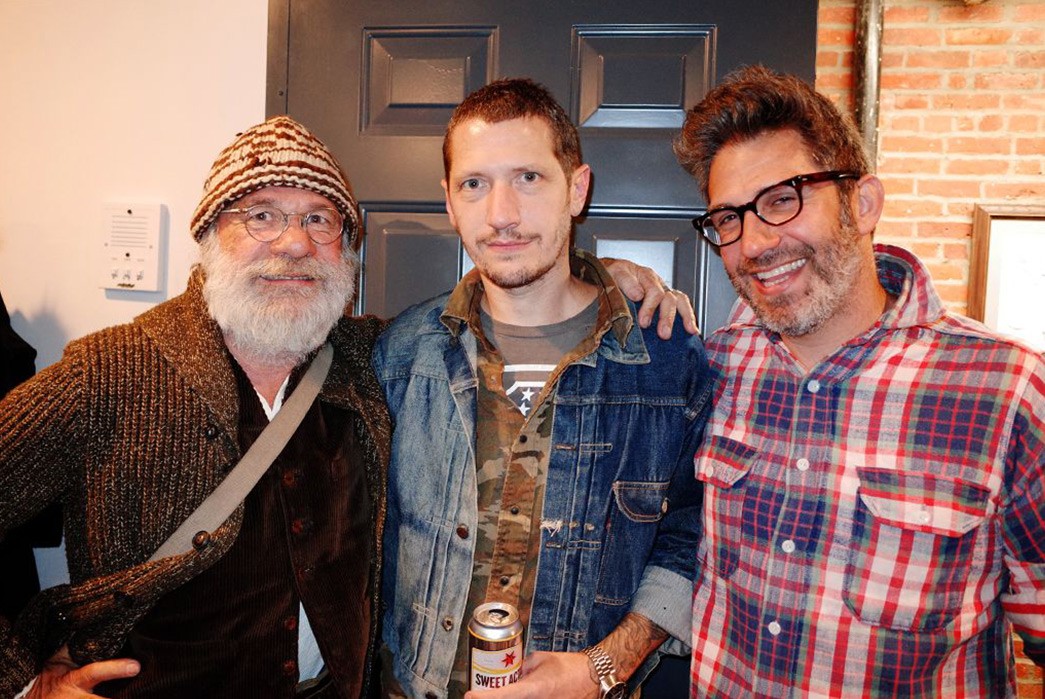
John with Ralph Lauren vintage buyer Doug Bihlmaier and photographer Eric Kvatek (Image via Eric Kvatek)
H: You went to FIT (Fashion Institute of Technology) and worked as an intern at RRL, then becoming a design assistant for the brand. Talk us through these early days at RRL?
JG: By the time I joined RRL in early 1997, the brand’s original concept of distribution (big shops within department stores) was failing. The brand was way too expensive for its target customer (college kids). We had shrunk back to being one store at Polo Sport and a handful of small shops in other Polo stores. But Ralph loved the concept so we had his support.
The job barely paid enough to live on, so I was given one day a week to continue my fledgling vintage business. I was buying and selling vintage to my private customers, selling at flea markets, and bringing vintage to the design table at RRL.
The primary role I played at RRL was actually resourcing. Finding vintage clothing, photographs, and objects to support our design concepts. Shopping, spending hours in the library, and working with our graphics team. It was fun, but ultimately, not very creative. Eventually, I realized I would rather be my own boss in my own vintage business, as I was finding that world much more inspiring.
H: While you had been dealing in vintage clothing for a number of years, you went independent in 1998 and had your own store front on the Lower East Side. What was the vintage clothing world like at this point? Were you interacting with many Japanese buyers at this point.
JG: I started dealing in vintage in 1994, but on a very small scale. While at FIT, I began selling at the Annex Flea in Manhattan. I was living at the YMCA and wheeling a cart of vintage over to the market every weekend. Over the next few years, I built a small but steady group of Japanese shop owners and NYC design clients. By the time my wife and I opened our shop on Orchard Street, we had the makings of a solid wholesale business.
During this time, the vintage business was very strong. We had one Japanese client with a monthly order of relatively easy to find “used clothing”—it was low priced items with relatively small profit, but the quantities were big and it paid all our bills. It allowed us a great deal of freedom to travel and buy. Our designer business also grew during that time.
We were buying and selling furniture too, especially military and industrial. Our shop was a really fun mix of clothes, furniture, and decorative items. Not so rare now, but very unique at the time.
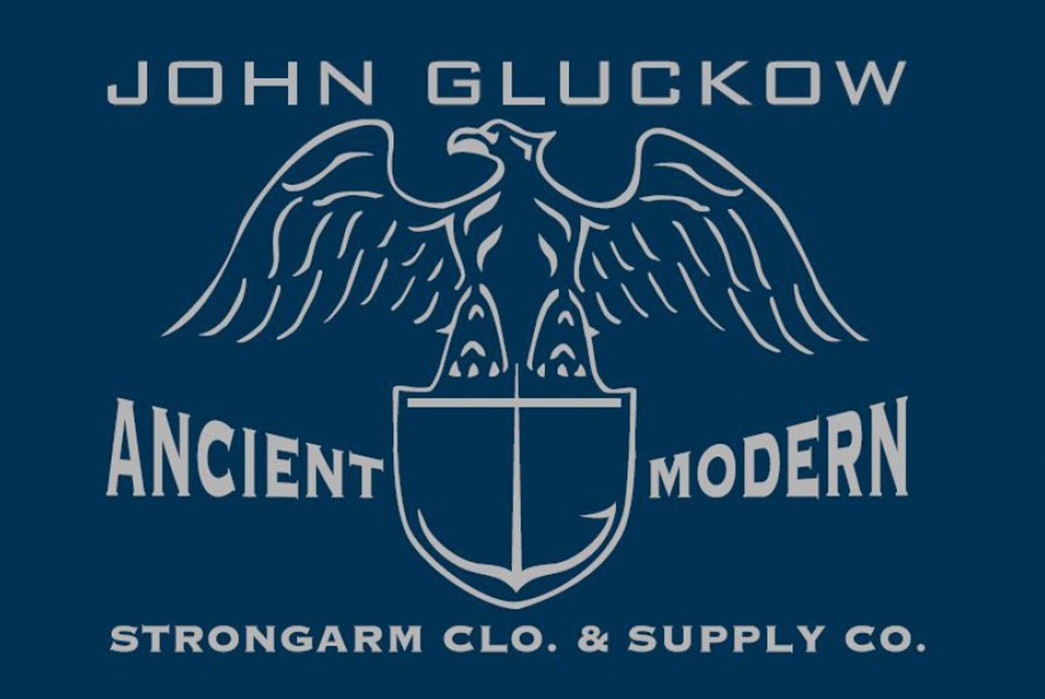
Image via John Gluckow
H: Your current brand—John Gluckow’s Ancient & Modern Clothing—is well rooted in the Japanese market with limited international distribution apart from a handful of select stores. Tell us about your connection with Japan and what it is about this market which lends itself to the brand?
JG: So, Strongarm Clothing & Supply Co is actually the name of my vintage business and has been since 1998. The clothing brand, started in 2013 is called John Gluckow’s Ancient & Modern Clothing (it’s a mouthful).
I met my partner in the brand, Yohei Goto, selling vintage to him at a few events I did in Japan and at the Inspiration shows in LA. His Jelado brand is known for his skill at choosing unique vintage samples to reproduce. And, of course, for his high quality fabrics and construction.
When he asked about starting a brand together under my name, I realized he and I were a really good fit. He was a bit nervous with some of my choices the first few seasons, but he’s realized that our brands are distinct and that we are building unique customer bases. And we’ve developed a great trust in each other which has helped the business grow each year.
When we started out, we would make a new theme for each season. Now we’ve settled into making that concept last for one year, so each theme has a spring and an autumn version. Working at Ralph Lauren, that was how we designed (new concept each season). But of course, RL also has a huge range of basics that are always available.
Starting from scratch, we didn’t have those basics. It made growth difficult in the beginning, as customers and shops didn’t understand the “nature” or “identity” of the brand. That was a learning process for me. Luckily, Goto-san was patient enough to see us through to where we are now.
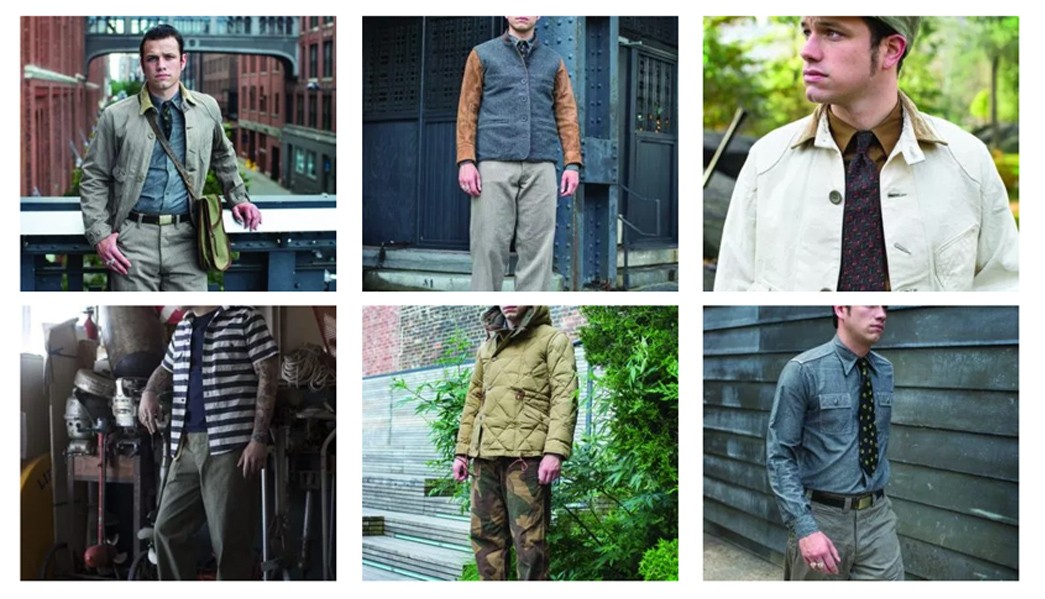
Images via Erix Kvatek
H: Any intention for expanding distribution in the future?
JG: Growing the business slowly within the Japanese market has allowed us to find our favorites within the brand and build a group of “Strongarm Standards”, our basic products, which we will be ready to offer overseas in the near future.
Delivering the seasonal concepts to shops outside Japan is a challenge because those items tend to arrive “on season”; not months before the season, as most Western stores expect (think winter items arriving in August). Hopefully, as shops get familiar with us through the standard items, we will find avenues for offering the concept items overseas, as well
H: While your garments are heavily influenced by the past, they are much more creative than simple reproduction clothing. Talk us through your approach and design process for a typical season? How does your vintage archive play into this?
JG: Straight up reproduction just isn’t very interesting to me. I understand it is a challenge to recreate something exactly as it was made 100 years ago. But it seems like more of an exercise than a creative process.
We work basically with seasonal themes. So, I will research and choose a theme or concept. And then, I gather the vintage pieces that I want to work with within that concept. Occasionally, it happens in reverse, where I find a great vintage piece which points me towards the theme. In either case, my archive plays a crucial role in the process.
Between seasons, I usually have a stash of pieces I’ve found that might be useful for design. I typically search through my archive every 2 or 3 months to add in new pieces and pull out things I’ve decided to sell. While I’m doing that, I also set aside things that could be used in the next concept. Finally, I sit down with everything and lay out what I would like to make.
Before the pandemic, I would then take everything to Tokyo and sit down with our staff and lay out the line. We would work out any problems together. And then I would choose all the fabrications, trims, stitch colors, etc. This would usually all happen in Tokyo over the course of a two-week trip.
At the moment, I’m starting this process remotely, for the first time. I’ve sent photos of the garments we plan to work from and Goto-san has approved them. Now, one of our staff will work as my eyes and pull fabrics to show me as options for the various pieces. I usually spend 2 days in the office digging through thousands of swatches to find the 8 or 10 we will use. So this will definitely be a challenge. But I’m excited to see how we can pull together as a team and make it work.
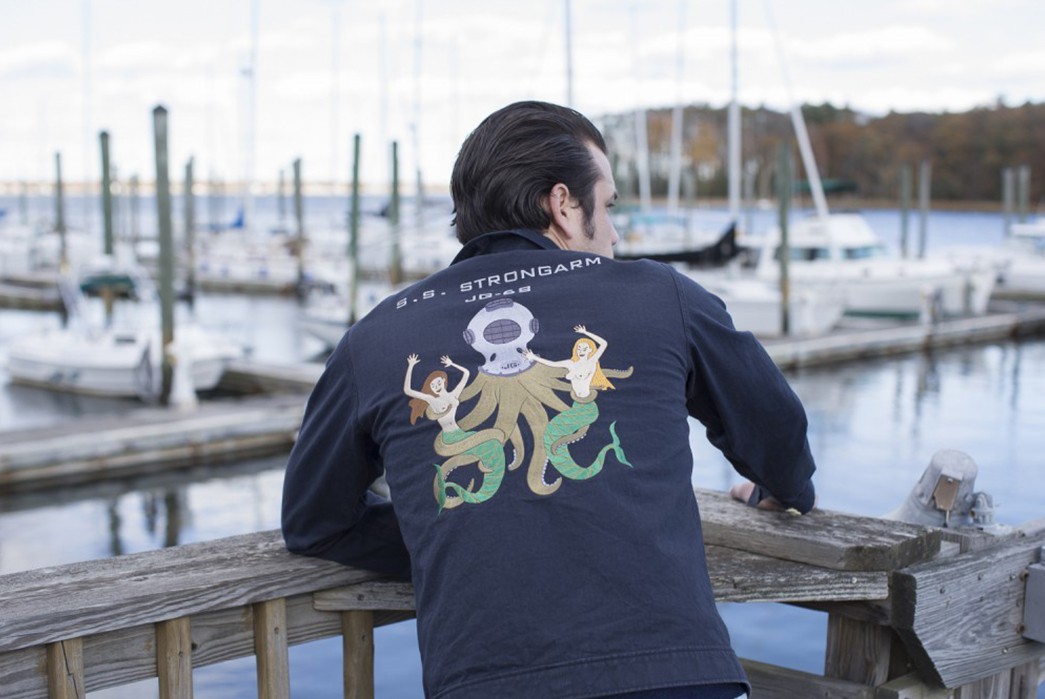
Image via Eric Kvatek
H: How has the vintage clothing industry changed in the last 20 years and are you still able to find pieces which inspire you and influence the brand?
JG: Well, the vintage business is always changing…and also basically staying the same. As time passes, older things are harder and harder to find. But, more recent things gain a bit of context and history and a new generation finds them to be more interesting.
The biggest change, I think, is the internet. It has changed how people source and sell to such a vast degree. The internet makes the world such a small place, in terms of being able to meet and communicate easily with people from far away. But what I have found, from day one, still applies: treating people with respect in every aspect of business is essential.
No matter what work you do, being kind and considerate goes a long way. Building relationships based on knowledge and respect always works. Our business can be very competitive, even cutthroat. But I still work with many of the same people now that I met 10 and 20 years ago. That means a lot to me.
Of course, it is harder now to find the very old pieces that I usually use for the brand. But still, it happens. And I also look for inspiration in different places, like old catalogs and photographs. We have enough experience with garments that we can figure out how something drawn in an old catalog would actually look and feel in the flesh. Since we aren’t reproducing things, per se, an image in a photo or catalog is more than enough to work from.
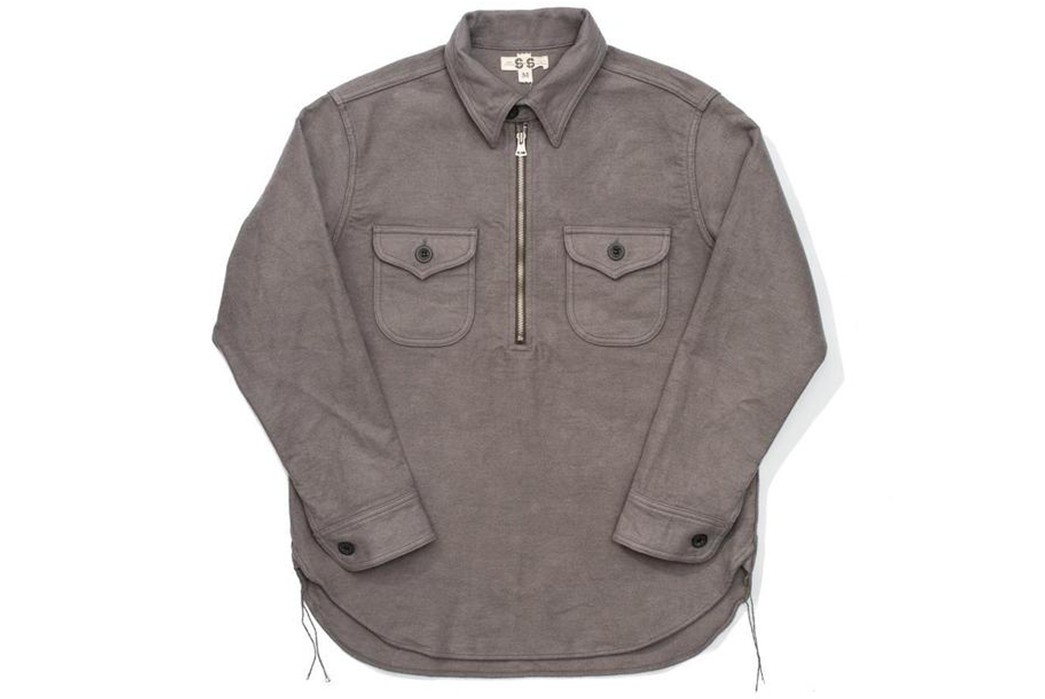
Image via John Gluckow
H: Tell us about one of your most memorable vintage purchases?
JG: Almost 20 years ago, I had a crack in my windshield and my insurance company sent me to a repair shop deep in Brooklyn. Heading out there, I drove past a huge thrift shop which I had heard of, but had never been to. I decided to stop there on the way back.
It was a thrift store attached to a rag mill, so it was huge. Maybe three floors filled with racks. Going through a rack of ladies wool coats, I found a men’s deadstock 1920s Pendleton blanket jacket. Someone had sewn a plastic zipper into the front opening, so that it opened to the women’s side. It still had it’s original buttons. And they hadn’t actually cut or undone any stitching to add the zip, just sewed it to the center front.
It was the middle of summer and I guess it had been there a few weeks, so it was discounted from $9.99 to $4.99. It was a bit small for me, but I kept it in my collection for a long time. A few years ago, I decided I needed to rethink my criteria for what I keep: basically, I sold off a lot of things that I couldn’t wear or see myself using for design. That jacket didn’t fit either category, so off it went. It stung a bit, but it’s better off in the hands of someone who can wear it.
H: What does the future hold for John Gluckow and Strongarm Clothing & Supply? And where can we find out more?
JG: I’ll be doing the same things as now, just with more grey hair…I love vintage clothing and will keep doing this business for as long as I can. I also really enjoy having the brand. In an ideal world, the brand would grow and the balance of my work might shift a little more towards design. But I need to stay immersed in the vintage business in order to design. The two go hand-in-hand.
H: Thanks for taking the time to talk and sharing this trip down memory lane with us, John!
You can follow John via @strongarmclothingandsupply and @johngluckow_ancientandmodern via Instagram, or head to Jelado to browse product online.
